Feature Post for January 2016
Why I Garden
Growing any type of garden involves many aspects of life: patience, learning, physical activity, sight, smell, taste, and risk are what comes to mind.
One learns patience by planting a tiny (or large!) seed and waiting for the seed to germinate, watching it grow, caring for the plant it becomes then enjoying the fruit of the plant whether it be a fragrant stalk of lavender or tasty leaves of thyme, a zinnia or an iris, tomato or cucumber, or a cherry or a peach. You can’t hurry Mother Nature.
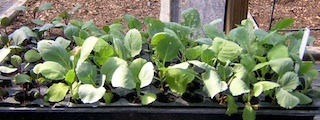
Cauliflower Seedlings
Learning all you can about gardening in general or whatever it is you like to grow may lead you beyond the garden into family history to learn whether your grandparents grew a garden, and if so, what kinds of plants they grew.
You may become interested in the history and lore of herbs or the stories behind heirloom vegetables. You may turn to the very basis of gardening and begin to study botany, soil composition, organic growing or any of the many facets of the insect world. There is no end to the avenues that are open to you when you begin to look at your garden as the start or continuation of an education.
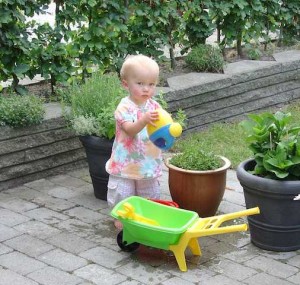
If you garden with children, the lessons are endless. In the end, though, they are the same ones we learn as adults when we garden.
Get into the garden and pull weeds, hoe your vegetable rows, spread more mulch, prune the errant branch, deadhead those marigolds (save the seed heads for next year, or just crumble them through your fingers to sow seeds for later in the season), dig a new bed, mow the lawn…. gardening is great exercise.
Why pay for an expensive gym or spend time indoors on a machine when you have the best of all gyms right out your back door?
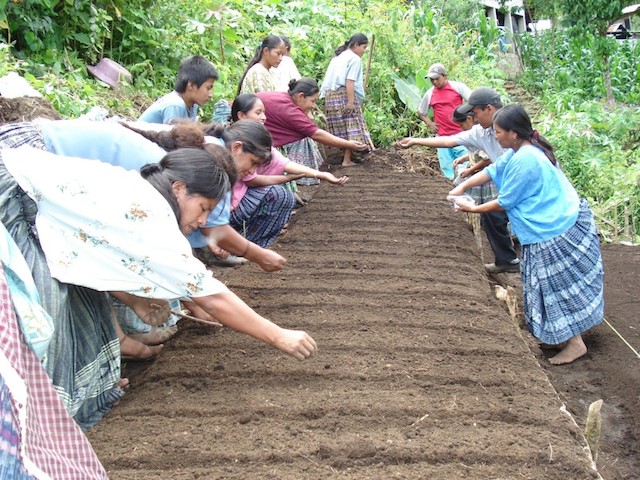
mayarelief.com
Gardening involves weight training… just lift a few big bags of mulch or turn your compost pile. Gardening involves stretching… bend at the waist and keep your knees straight when you pull weeds to stretch the hamstring muscles. Then, do some squats and pull some more weeds or harvest those strawberries off the ground. Hoeing and raking are terrific aerobic activities. And, after your workout, look at the results– a weed-free herb bed, healthier vegetables with more mulch or a neatly trimmed lawn. Then, sit back with a cool beverage and admire what you’ve done. You’ve earned it.
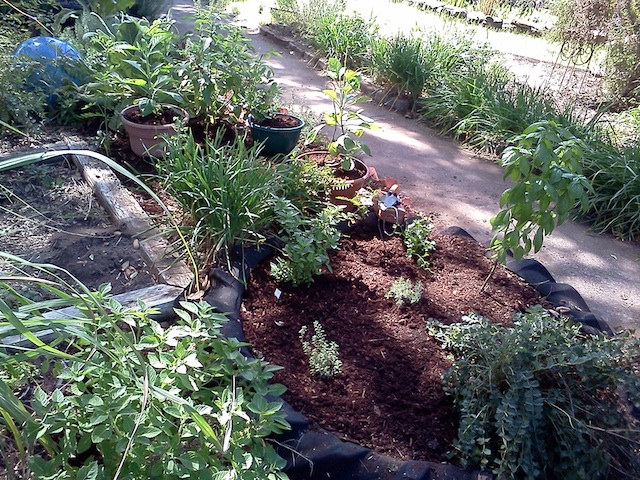
Newly Mulched Bed!
Don’t let the books, magazines and Internet take you so far from your garden and plants that you lose sight of why you started a garden in the first place.
For it’s there, walking through your garden in the early morning seeing the dew sparkle on the rose petals, touching the soft leaves of the lamb’s ear, smelling the oregano and rosemary, eating those crunchy and sweet snap beans right off the vine, and, especially, getting your hands dirty with that wonderful, rich, loamy garden soil…don’t you wish you actually had that kind of soil??… that you really experience the garden.
It’s why you spend so much time poring over seed catalogs, searching Internet gardening sites, combing nurseries for just the right plant. You’ve created your own little Eden right there where you and those you invite into your realm can see the best that nature has to offer. You’ve tended and coaxed and weeded and pruned and watered and worried and even though the garden is never done, always in flux, you can see and touch and smell and eat the results of your efforts.
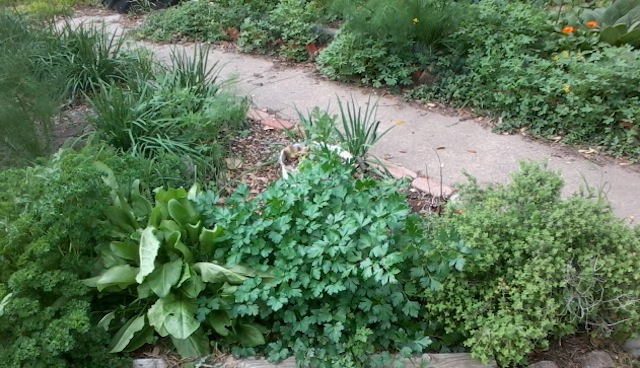
The Herb Cottage Winter Herb Garden
And, yes, there is risk in the garden, just like in life. Your new seedlings can be eaten by grasshoppers or rabbits. Deer may come and dine on the new shrub you just paid too much for. Early blight may attack your tomato plants. Corn ear worms may spoil the succulent ears you’ve been waiting so patiently for. A hail storm may come and smash down the corn stalks. You can experience a drought, complete with water rationing, so your plants don’t look their best. You have to pick and choose which to water. There are many risks in gardening… you may have chosen a poorly adapted variety of vegetable or flower, or planted a sun loving rosemary in the shade and it’s just not doing well.
But we learn by making many, many mistakes. It is said if you don’t kill many plants, you’re not gardening!! I don’t know about that, but I do know that experimenting is part of the fun of growing and if you don’t try, you’ll never know what will grow in your garden. So, try a new tomato variety or a new flower that you have to purchase mail order because no one in your area sells it, or even grows it… yet. You may start a new trend. Nothing ventured, nothing gained…. right?
Finally, the one aspect of gardening that encompasses all gardeners is HOPE… OPTIMISM.
What is it other than hope that keeps us planting season after season? We may think of last year’s failures, but still plant for the future.
Each gardening season is an opportunity for success, a little better than last time. As you plan your next garden, you bring all the skills you have or are learning to make the best garden yet. Each new garden is the best garden yet!
And, to me, that’s why we garden!!
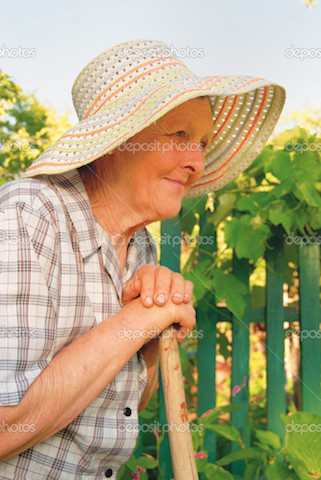
A Satisfied Gardener!
QUOTE FOR THE MONTH
We must be willing to let go of the life we have planned, so as to have the life that is waiting for us.
-E. M. Forster, novelist (1 Jan 1879-1970)
